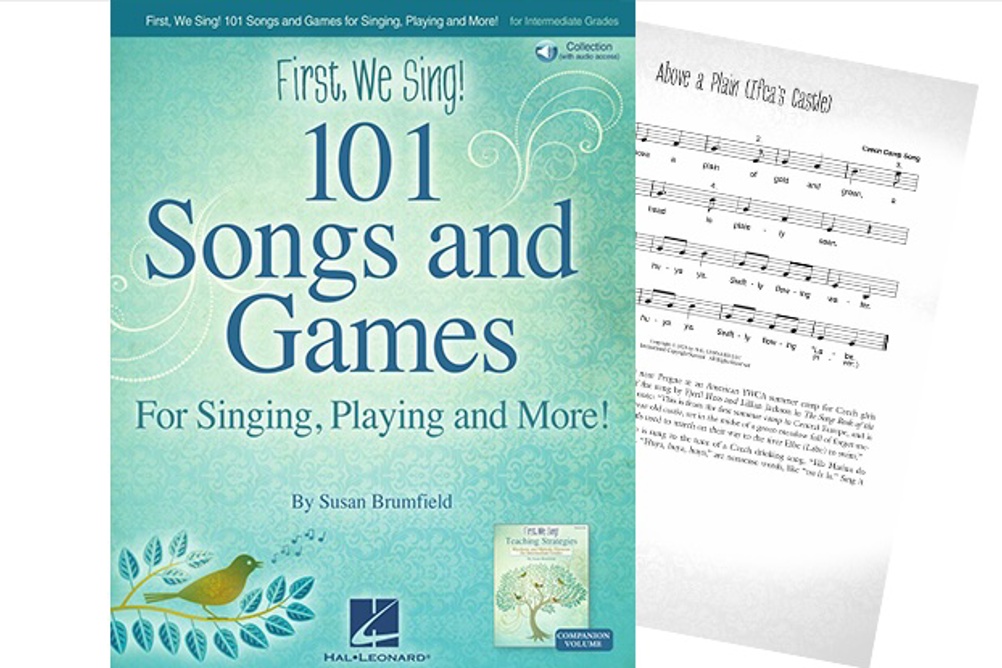
Some people, like perennially grouchy Grinches, are trying to reduce play in primary schools. These people are a) wrong; b) probably not much fun at a party; c) don't understand how children or other mammals develop; and d) have clearly never seen children play a Kodály game and then be able to notate the song as a result of this.
Play is fundamental to the Kodály approach. When children play a classroom singing game, their focus is on the game, rather than the singing. They sing without self-consciousness and want to play the games – i.e. practise – again, and again, and again. I devoured Lucinda Geoghegan's Singing Games and Rhymes, which skilfully encode elements such as notational knowledge into fun and joyful games. This is how I think primary music lessons should be, and Carl Orff's words have become a mantra for my career in primary classroom music teaching: ‘Since the beginning of time, children have not liked to study. They would much rather play, and if you have their interests at heart, you will let them learn while they play, and they will find that what they have mastered is child's play.’
First, We Sing! 101 Songs and Games For Singing, Playing and More! is a bumper title for a bumper book filled with songs and games curated by Susan Brumfield and released by Hal Leonard. It is clearly aimed initially at a US market, with the selection being quite Americocentric (‘America the Beautiful’, anyone?), though it does feature a range of cultures in the Americas, including Lakota, Appalachian, African American and cowboy songs. There are songs from further afield – some Spanish language songs, and songs from Europe, Africa, Japan and the Caribbean – but I would have liked to see some songs from the Indian subcontinent or Arabic cultures. However, the author has taken great care to respect the cultures and traditions included here, consulting ‘culture bearers’ and authentic, expert voices from a wide range of traditions. There is also history and context for every song, which helps us to understand the contextual value and meaning. The songs are much more ‘grown up’ than some Kodály programmes – no bouncing around pretending to be frogs or princesses, which should appeal to those children too cool for playschool.
While not aimed specifically at Kodály teachers, the suggestion of ‘songs for preparation, presentation and practice’ and the intro from the president of the International Kodály Society imply that the Hungarian pedagogy is a strong influence. It would have been nice to include more information for those unfamiliar with the three ‘p's (‘prepare, present, practice’). Explaining how each stage works, and even suggesting which songs in the collection are useful for each, or which might work as partner songs or as canons, would have been very helpful for nonspecialists and beginners to the Kodály approach. However, those who already teach in this way will find great teaching songs here.
Indeed, the same things that make this an excellent resource for Kodály teachers also make it a great one for all primary schools. Brumfield's due diligence in curation has resulted in appropriate, inclusive singing ranges, no difficult leaps or intervals, and nothing too technically challenging for a class that can sing well in unison. Despite their relative simplicity, many of the songs are very beautiful (especially when sung in canon) and would be great choices for school choirs, but can also be sung very successfully by relative beginners.
This is a collection I would highly recommend to both non-specialists and non-Kodály teachers. The supporting online resources are excellent – all songs are presented at a very comfortable singing range for the children. The performances in the online resources are all authentic, which gives the music the right feel and pronunciation, and this is good to see. The Hal Leonard player is also superb: it can play songs at half speed with great fidelity, which will help those learning the songs, or in practising the more complex games at a slower speed if used in the classroom. The demonstrations are also a cappella, which helps children and teachers to focus on tuning and tone without being masked by instrumental backings.
Overall, this book is essential for every music classroom. It's a bulging bag of brilliantly chosen and carefully researched songs and games. Kodály teachers will love it. Non-specialists will love it. I love it, but more importantly, pupils in KS2 (and branching into KS3 for those brave enough) will love it, too. A bumper collection of perfect classroom songs and games for KS2 with excellent supporting resources. What's not to love?
First, We Sing! 101 Songs and Games
Collated by Susan Brumfield
Hal Leonard ISBN 9781705127506
£38.50
tinyurl.com/4xbjxt38
tinyurl.com/723xwwcu (UK sales)




